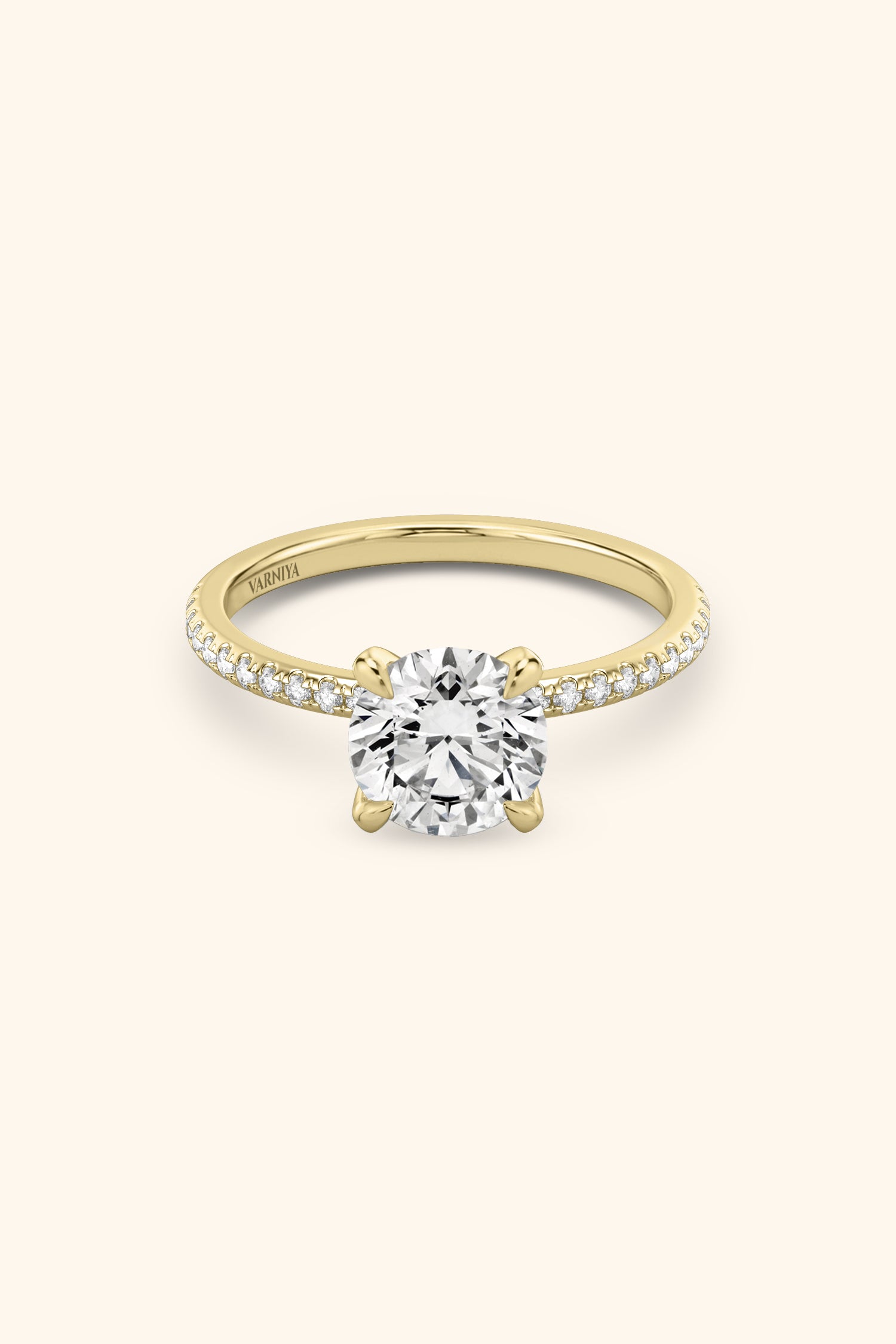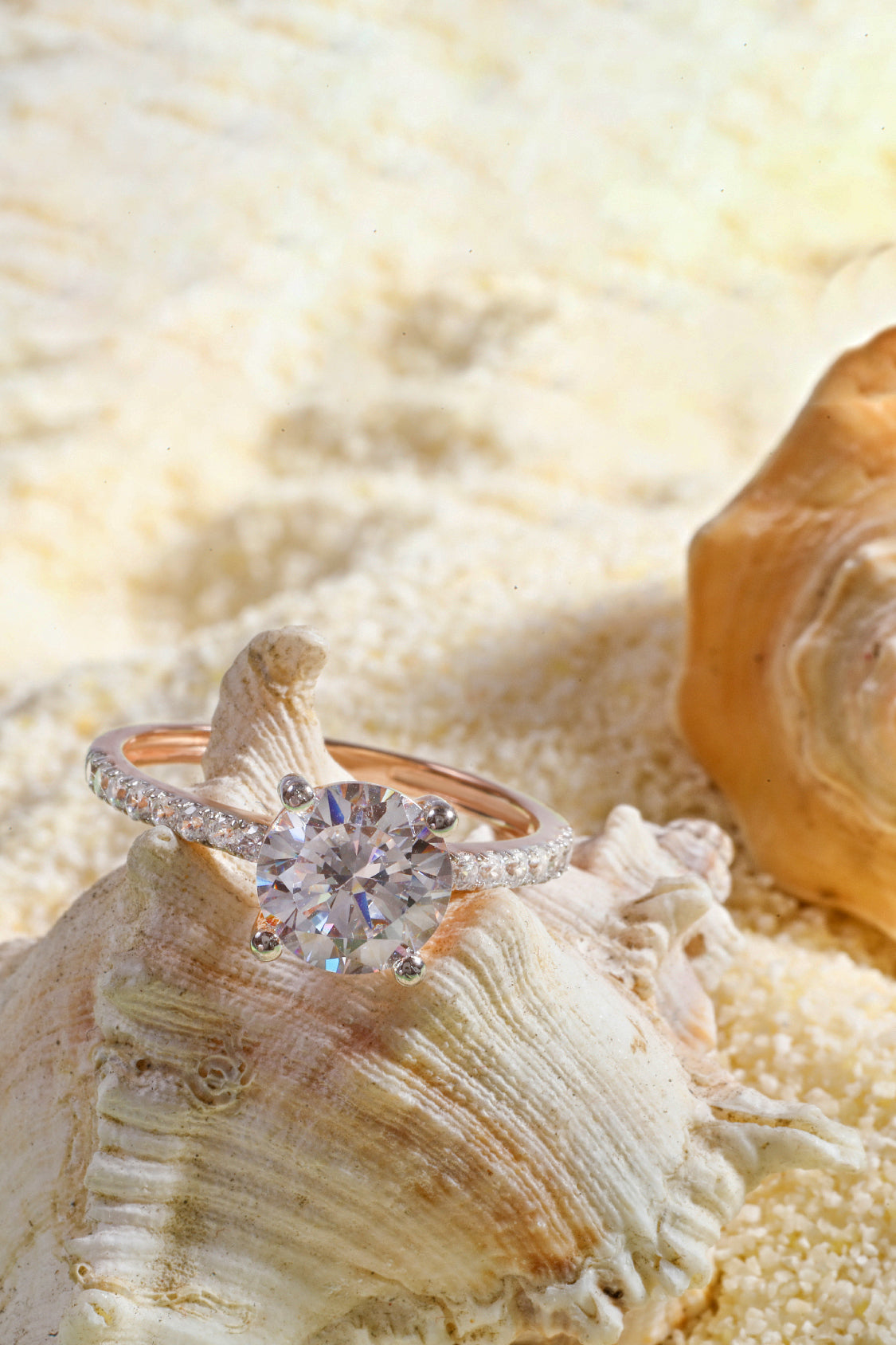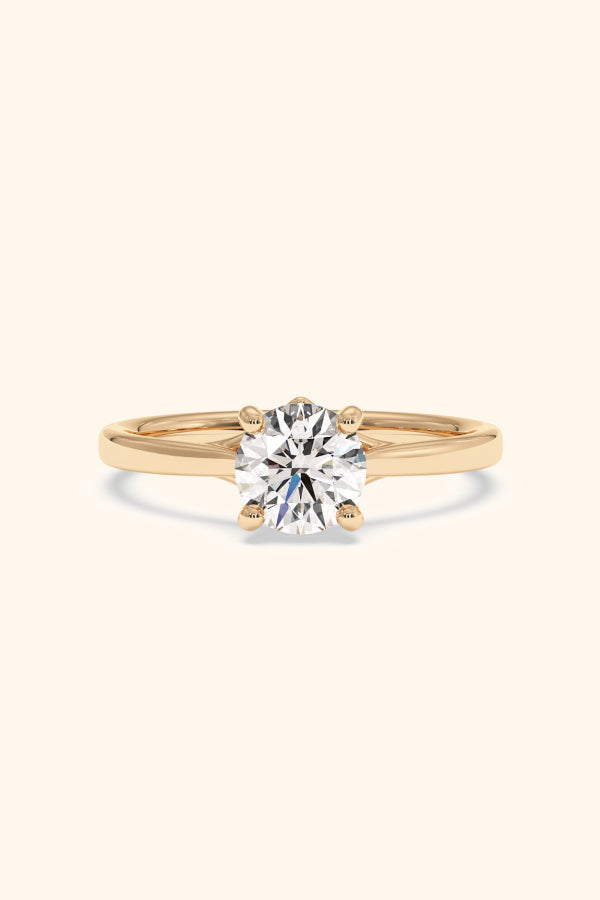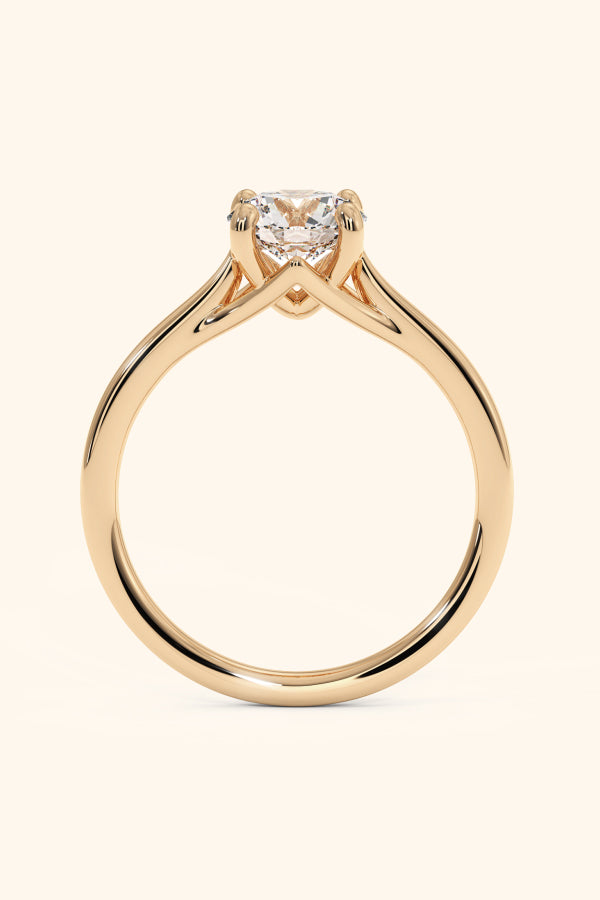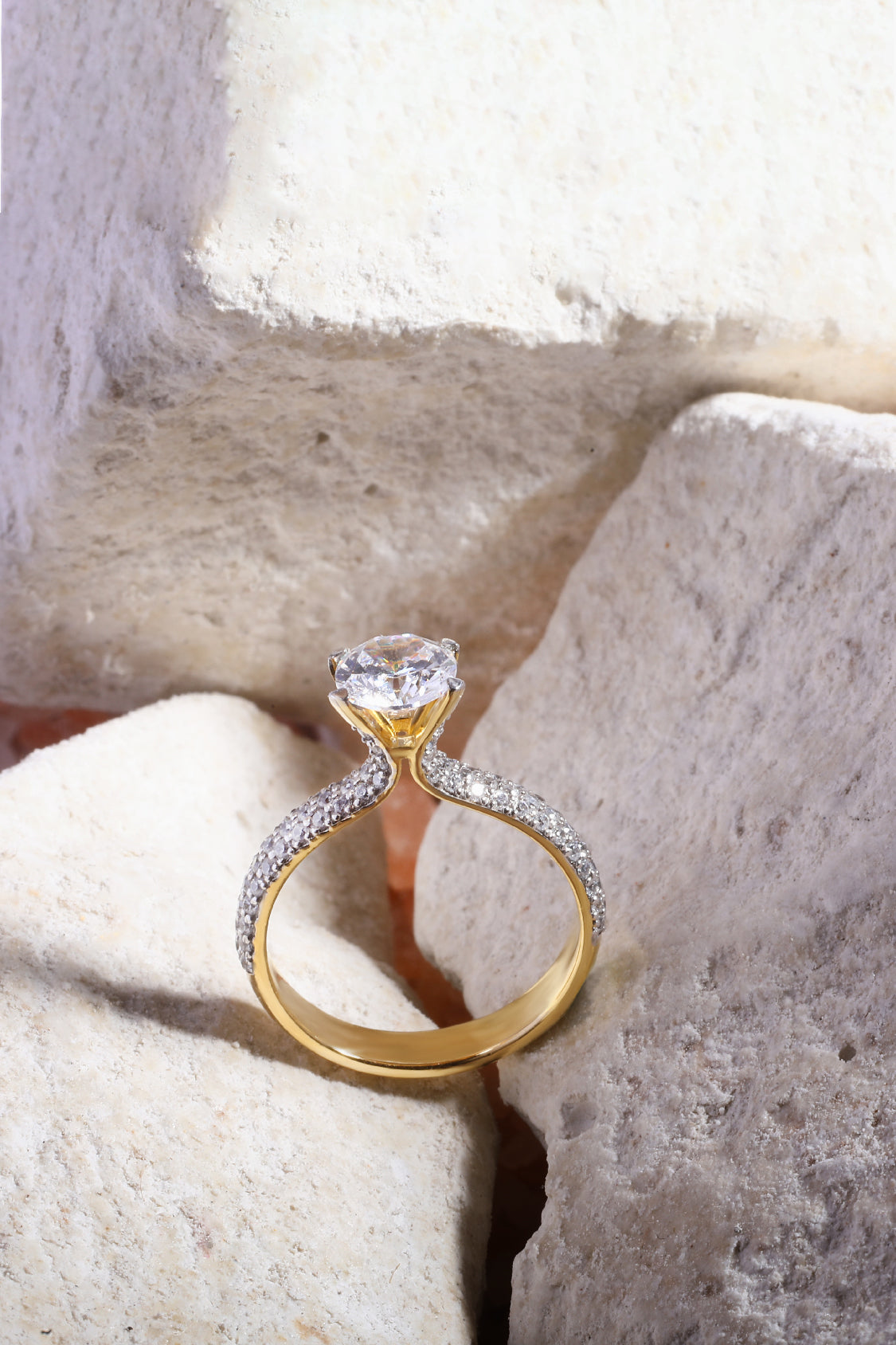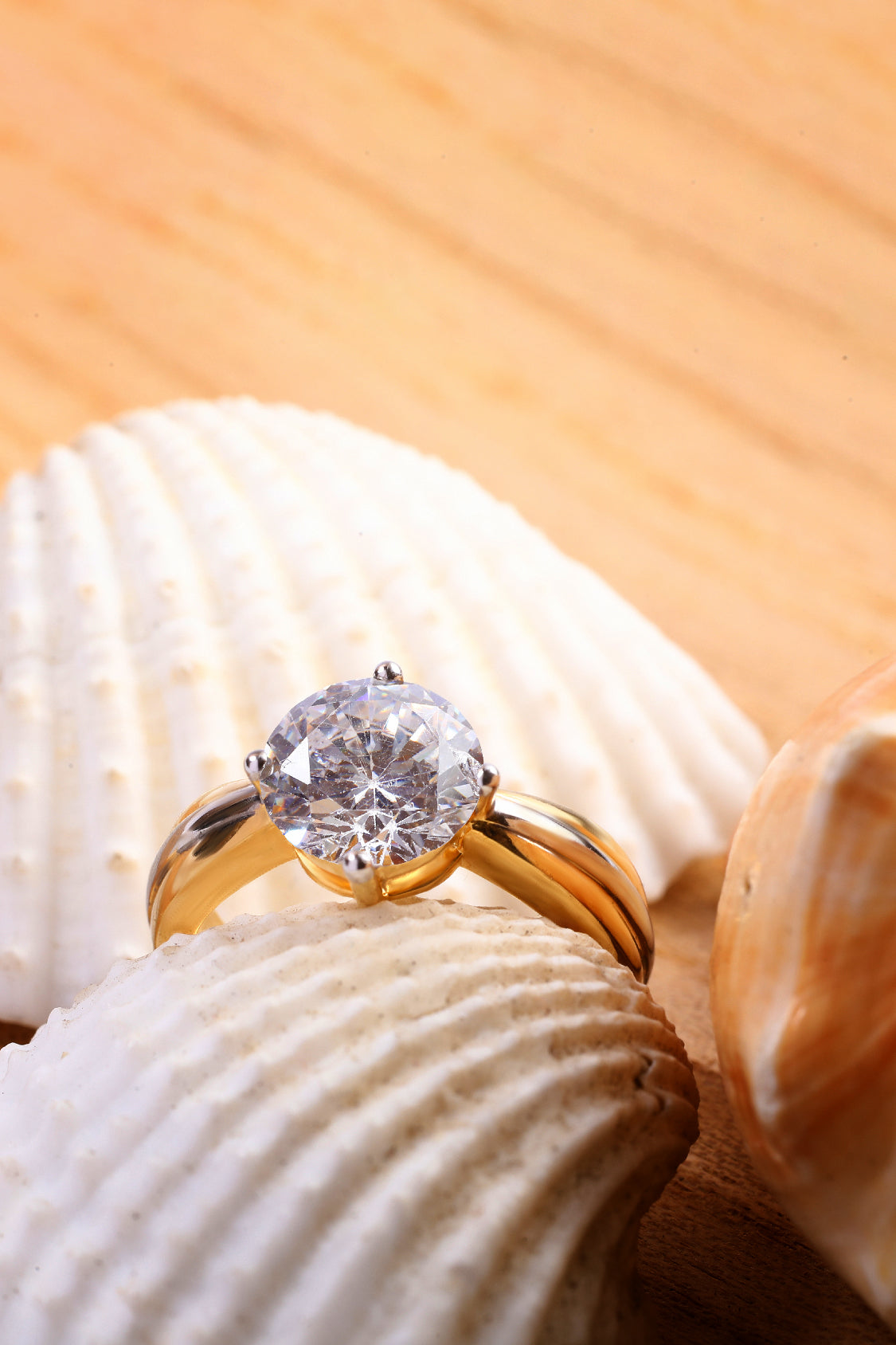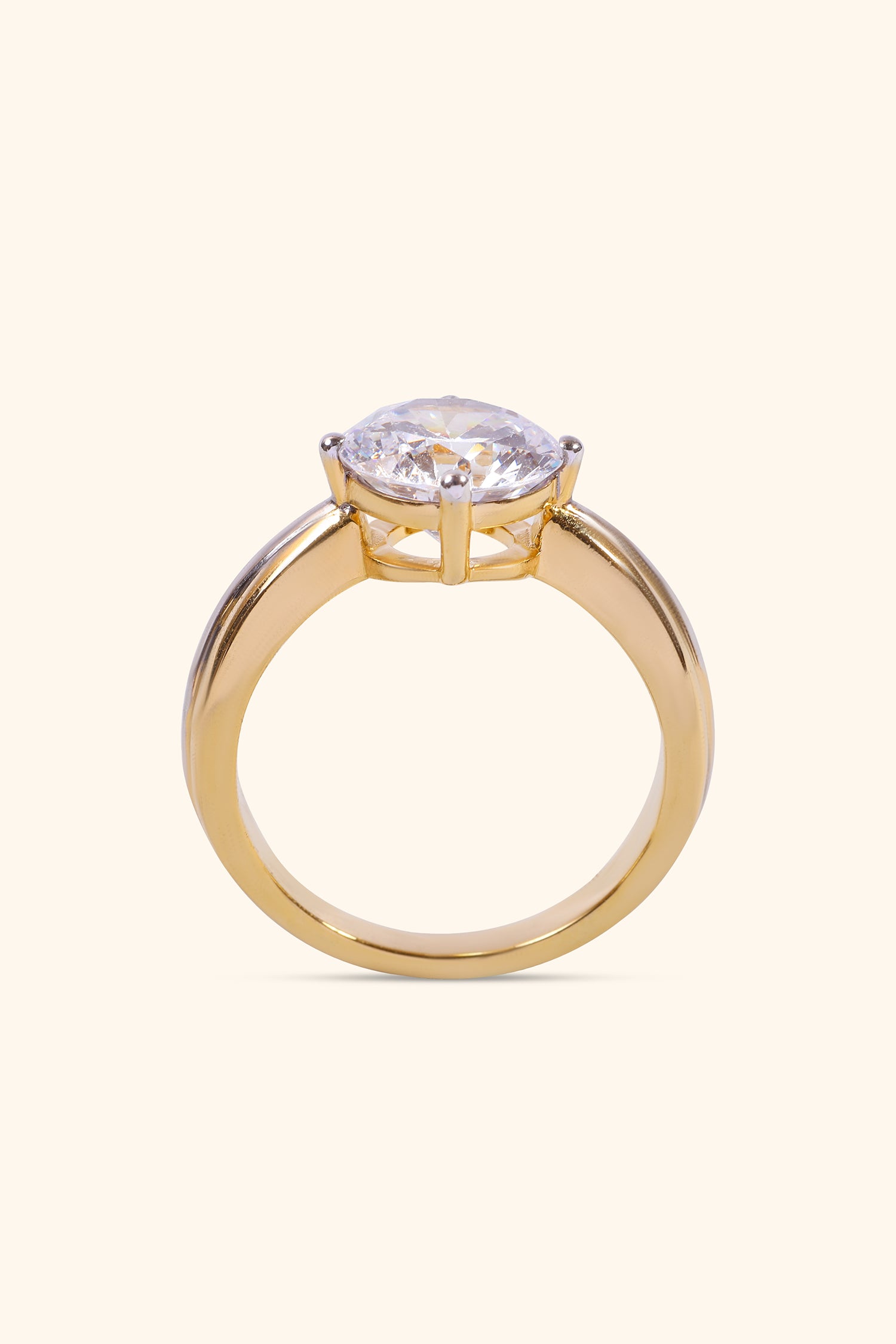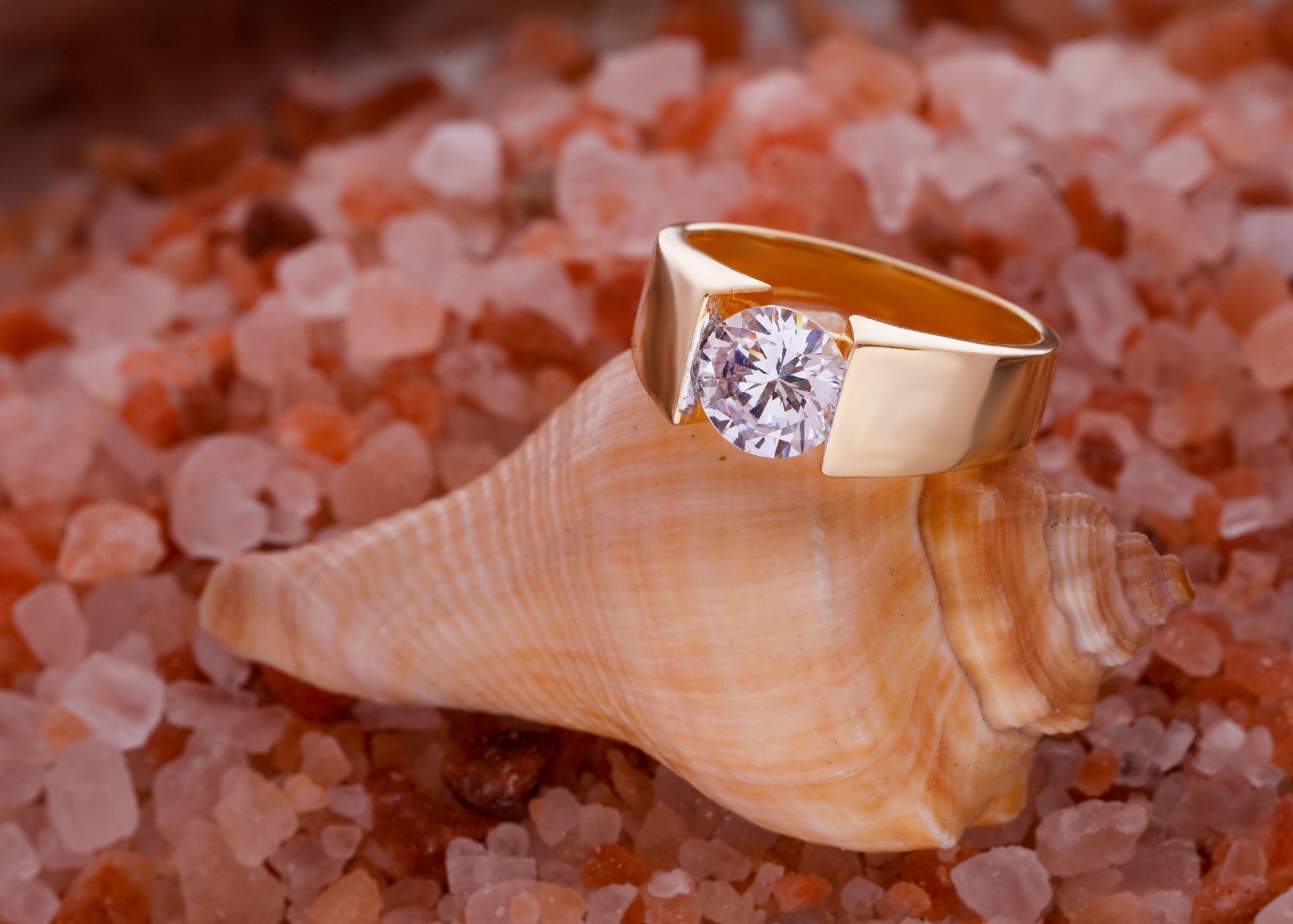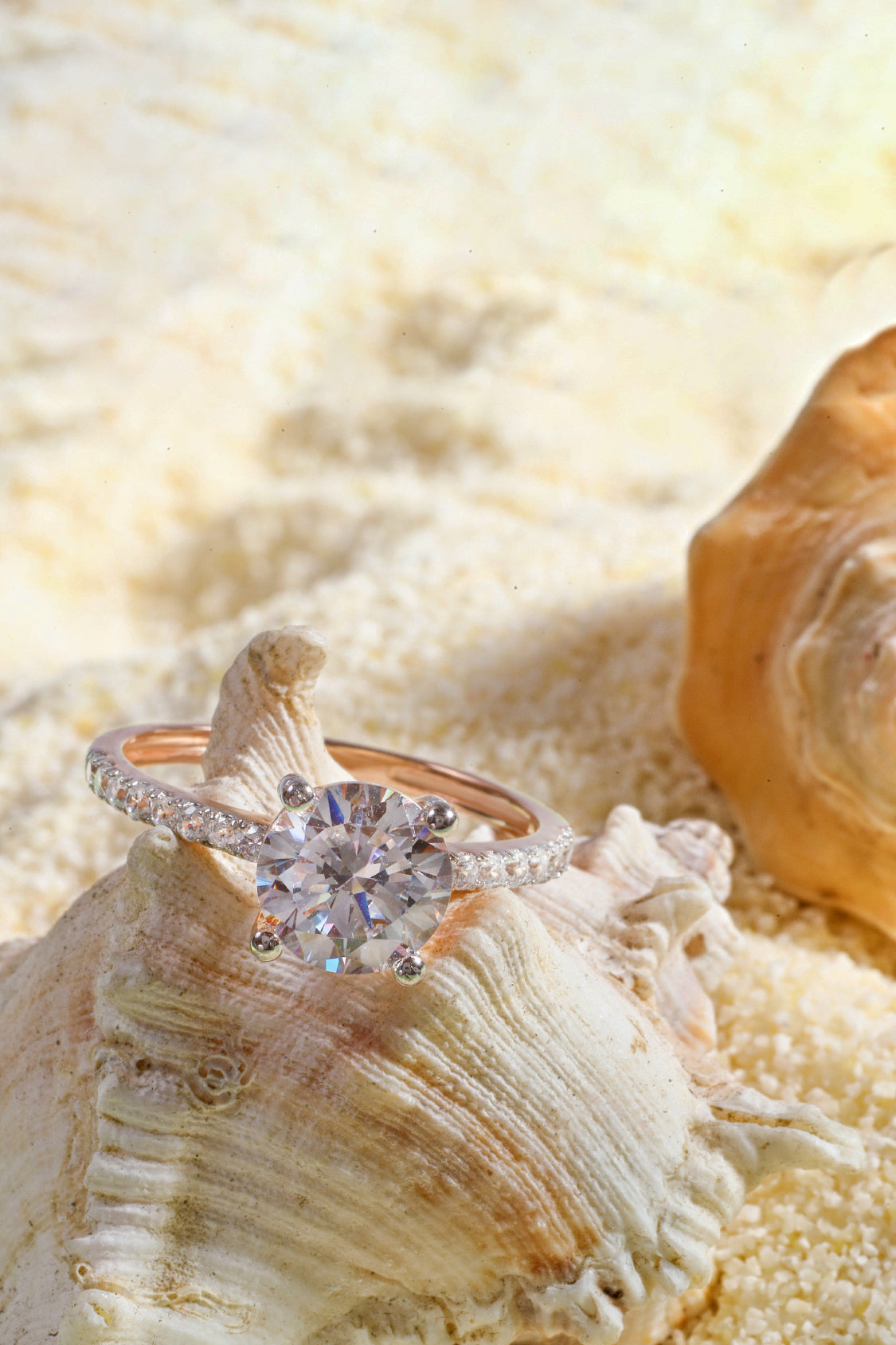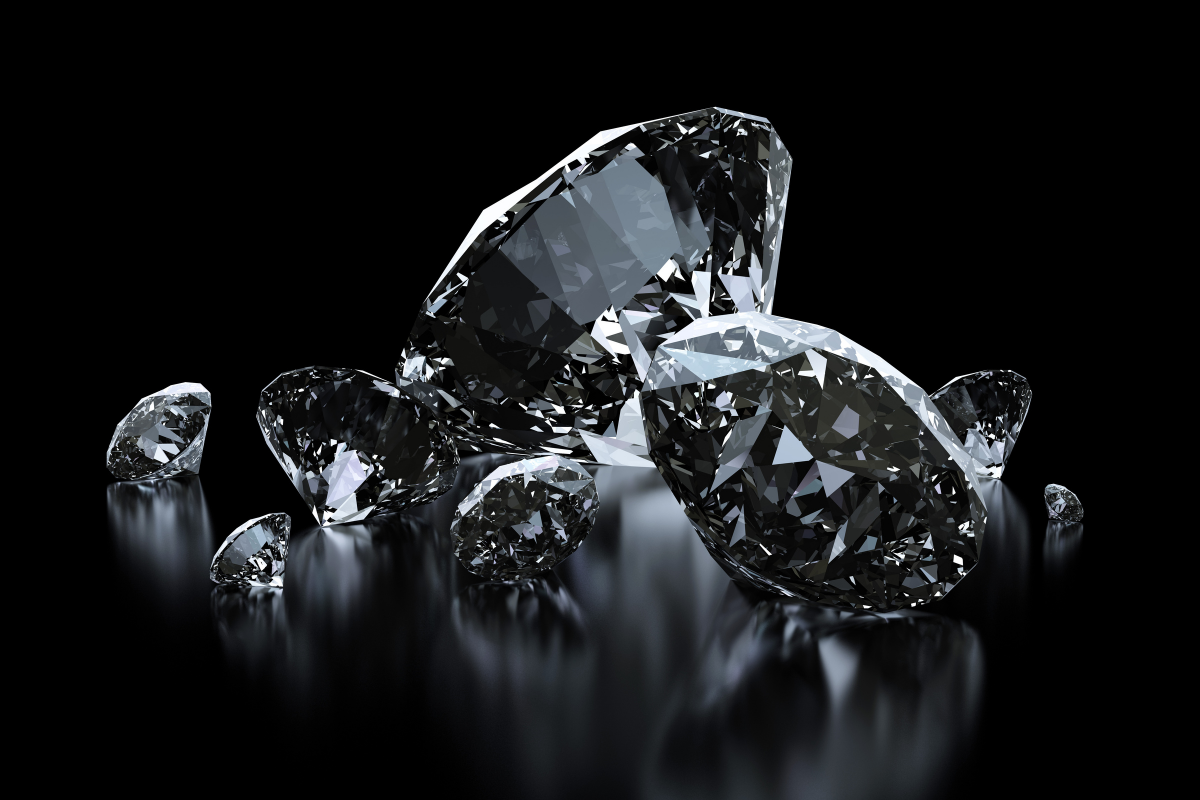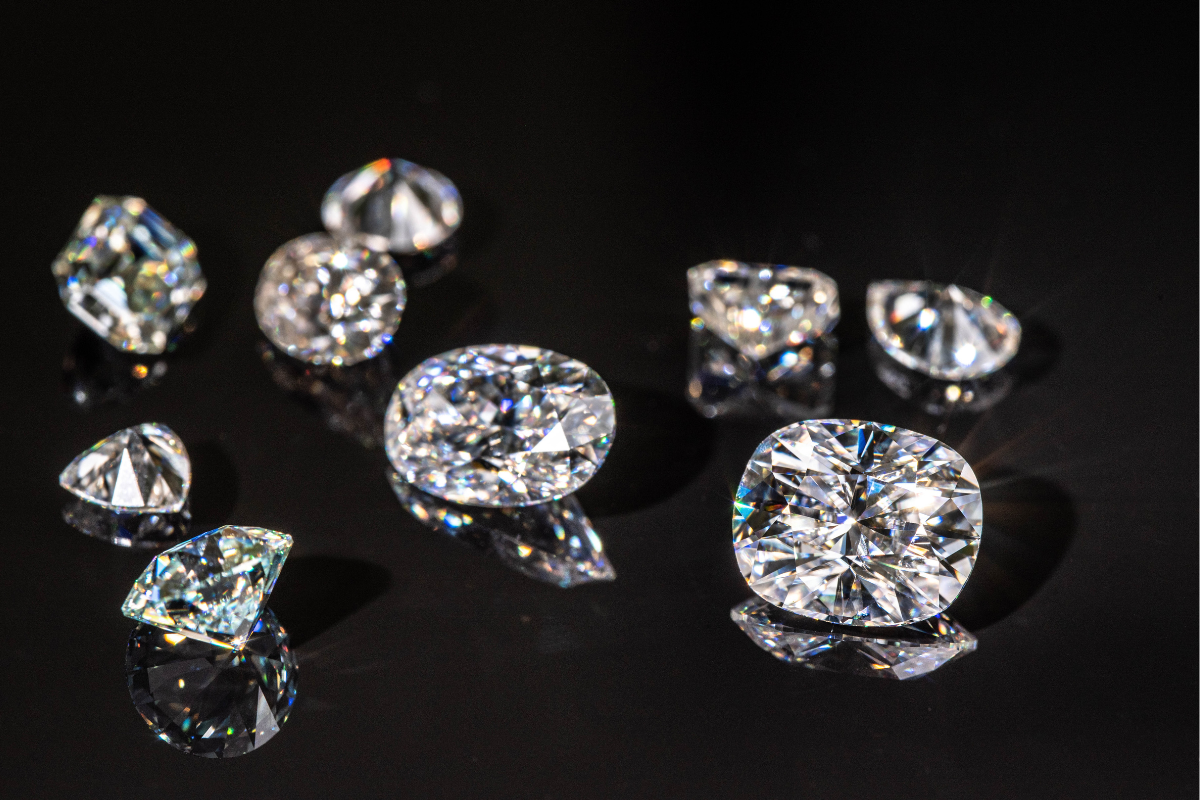
Does GIA Certify Lab-Grown Diamonds? Understanding the Grading Process
Lab grown diamonds are gaining attention for all the right reasons. They’re real diamonds with the same physical and chemical properties as natural ones, but they typically come at a lower price. That’s why many people looking for engagement rings or fine jewelry are now choosing lab grown options. But with that shift comes one key question: Does GIA certify lab grown diamonds?
The answer is yes. The Gemological Institute of America (GIA) began grading lab grown diamonds in 2007 and made a major update in 2019 by removing the term "synthetic" from their reports. This change better reflects the fact that these diamonds are structurally identical to natural diamonds.
A 2023 report by Edahn Golan Diamond Research & Data revealed that lab grown diamonds now make up nearly 20% of all engagement ring center stones sold in the U.S. As a result, more buyers are comparing grown diamonds with their mined diamond counterparts and seeking reliable, GIA certified options. Certification matters — it helps buyers make confident decisions backed by clear, third-party evaluation.
Do Lab-Grown Diamonds Get GIA Certificate?
Yes, lab-grown diamonds can get certified by GIA. Since 2007, the Gemological Institute has been grading these diamonds, and in 2019, they made a big shift by dropping the term “synthetic” from reports. That change reflected how laboratory grown diamonds are now seen—as real diamonds with the same crystal structure, chemical properties, and physical characteristics as natural stones.
Each diamond goes through a careful grading process, where GIA experts examine its clarity, diamond's cut, and carat weight, just like they do for mined diamond or gem quality diamonds. They also check for external flaws and evaluate diamond's characteristics under magnification.
“We grade lab-grown diamonds using the same standards as natural diamonds, including the 4Cs,” — GIA spokesperson, via JCK Online.
Once graded, GIA issues a grading report that includes a gia report number, and some stones receive a laser inscription on the girdle for easy tracking. Unlike cubic zirconia, which is a simulant, these diamonds are 100% real gemstones.
So, if you're shopping for fine jewelry or your dream engagement ring, a GIA certified lab-grown diamond gives you confidence in the diamond's quality—while helping you save money compared to natural alternatives.
How Does GIA Evaluate and Grade Lab Grown Diamonds?
The Gemological Institute of America (GIA) uses the same rigorous approach to grading lab grown diamonds as it does for natural ones. Since 2007, GIA has been issuing detailed grading reports for laboratory grown diamonds, helping many buyers make an informed decision based on transparent quality standards.
GIA assesses several key factors to determine the overall quality of each diamond. These are often referred to as the Four Cs: carat, clarity, cut, and color. For lab grown stones, the same grading criteria are applied without compromise.
Let’s break it down further:
Key Areas of GIA Evaluation:
|
Grading Factor |
What GIA Looks For |
|
Carat |
The weight of the diamond, measured in metric carats. |
|
Clarity |
Internal or external flaws like inclusions or blemishes. |
|
Cut |
The diamond's cut quality, angles, and proportions. |
|
Color |
Absence of color; more colorless means a higher grade. |
|
Crystal Structure |
The internal atomic arrangement, identical to mined diamonds. |
|
Chemical Properties |
Evaluated to confirm it matches known diamond standards. |
|
Optical Properties |
Light performance, including brilliance and fire. |
|
Physical Characteristics |
Includes hardness, luster, and overall makeup of the diamond. |
Technology Used in Grading -
GIA relies on advanced technology like spectroscopy and magnification to examine lab created diamonds. They may also determine the growth method, such as chemical vapor deposition (CVD) or high pressure high temperature (HPHT method). Both processes produce diamonds with nearly identical properties to those found in nature.
Important Notes for Buyers -
-
GIA clearly marks lab grown diamonds with a laser inscription that includes a GIA report number.
-
Unlike cubic zirconia, lab diamonds are chemically and physically identical to natural stones.
-
GIA dropped the term "synthetic" in 2019 to better reflect their true nature.
-
The GIA report includes whether the diamond is lab created, along with detailed specs.
Why This Process Matters -
GIA’s consistent evaluation helps you compare lab grown and mined counterparts using a trusted scale. Whether you're shopping in the jewelry market or planning your perfect ring, GIA-certified reports offer reliable proof of quality.
Many buyers care about traceability, value, and making sure they aren’t overpaying. Since lab grown diamonds can cost 30–40% less than natural ones (as per Forbes, 2023), GIA certification becomes even more relevant.
In short, GIA evaluates every certified diamond thoroughly—whether it's mined or lab grown. By applying the same grading lab grown diamonds standards, the institute ensures that the diamond's quality is never compromised. That’s good news for the jewelry industry, and even better news for you.
And if you're someone who values transparency, lab grading from GIA is a huge step in making smarter diamond choices.
What Is Included in a GIA Grading Report for Lab Grown Diamonds?
When you receive a GIA grading report for a lab grown diamond, it’s not just a certificate — it’s a detailed summary of that diamond’s identity and quality. GIA uses the same standards it applies to natural diamonds, but there are some key additions and distinctions worth knowing.
Let’s walk through exactly what’s in the report — and what makes it matter.
🔍 Core Details in the GIA Report
Here are the main things the Gemological Institute includes in the original report for lab created diamonds:
|
Feature |
What It Covers |
|
Diamond Identification |
Confirms it's a laboratory grown diamond, not a simulant like cubic zirconia |
|
Laser Inscription |
A unique GIA report number inscribed on the diamond’s girdle |
|
Cut, Clarity, Carat, Color |
The full Four Cs, including diamond color, carat weight, and clarity |
|
Grading Criteria |
Follows GIA's standard grading scale for both lab grown and mined diamond |
|
Growth Method |
Lists how the diamond was formed — HPHT method or chemical vapor deposition |
|
Detection Notes |
Comments on any identifiers or characteristics of lab created origin |
“Our grading reports help buyers make an informed decision by clearly stating that the diamond is laboratory-grown, and listing all characteristics as we do for mined diamonds.”
— GIA Spokesperson, via GIA.edu
Why These Details Matter
Knowing what’s in the report is key to trusting the diamond you’re buying. The grading is carefully examined using tools that assess physical characteristics, optical properties, and external flaws. These details help confirm if the stone meets the standards of a certified diamond — and whether it can be considered a high quality diamond.
While natural counterparts and lab grown diamonds may look identical, their formation processes differ. That’s why GIA also includes the growth method in the report — to ensure full transparency.
Pro Tip -
When you’re buying fine jewelry or engagement rings, always ask to see the GIA grading report. It protects you from paying for something that isn’t accurately represented — and helps you understand the diamond's characteristics clearly.
Also, don’t confuse lab created diamonds with cubic zirconia or other simulants. GIA grading reports will never be issued for imitation stones.
Quick Summary -
-
GIA includes diamond’s cut, carat weight, clarity, and color
-
Report lists whether the diamond was created using HPHT or CVD
-
You’ll see a laser inscription tied to a gia report number
-
Notes cover chemical properties, crystal structure, and grading criteria
-
It helps buyers save money while still getting gem quality diamonds
Are GIA Certified Lab Grown Diamonds Reliable?
Yes, GIA certified lab grown diamonds are reliable — and for good reason. The Gemological Institute of America uses the same strict grading criteria for both lab created diamonds and natural counterparts, which means you’re getting a consistent, transparent, and professional assessment every time.
Each diamond is carefully examined by expert gemologists using advanced technology, including high-powered magnification, spectroscopy, and imaging tools. These methods help identify the physical characteristics, chemical properties, and even the optical properties of the stone. You’re not just getting someone’s opinion, you're receiving a scientific evaluation from one of the most trusted names in the jewelry industry.
In fact, every report includes a unique GIA report number, and most diamonds are marked with a laser inscription that matches the report. That level of traceability helps confirm the stone’s identity. The report also includes full details on the clarity, diamond’s cut, carat weight, and diamond color, making it easier for you to compare options and make an informed decision.
“A GIA grading report is a trusted tool that helps people compare diamonds and make decisions with confidence.”
— Tom Moses, Executive VP, GIA, via GIA.edu
It’s also worth noting that the report outlines the growth method, such as HPHT method or chemical vapor deposition. These are important distinctions that separate lab created diamonds from mined counterparts, even though they share the same crystal structure.
For many buyers, price is also part of the conversation. According to Bain & Company, lab grown diamonds typically cost 30–40% less than natural stones of the same grade. So if you’re choosing a diamond for an engagement ring, a gift, or fine jewelry, you’re getting real value — not just savings, but a certified diamond that meets high standards.
To sum it up: yes, GIA certified lab grown diamonds are trustworthy. Backed by science, detailed in an original report, and graded using consistent methods, they offer clarity (in more ways than one) for anyone shopping in today’s jewelry market.
So, does GIA certify lab-grown diamonds? Yes, it does — and the process is as detailed and reliable as it is for natural diamonds. If you’re considering a lab-grown diamond for an engagement ring, gift, or everyday wear, a GIA certification gives you peace of mind.
It tells you exactly what you're buying, with no guesswork around cut, clarity, carat weight, or color. GIA even lists how the diamond was created — whether through HPHT or chemical vapor deposition — and marks it with a unique report number. While certification isn’t required, having a GIA grading report makes your decision easier and more informed.
GIA Lab-Grown Diamond Certification FAQs -
1. Can You Get a Certificate for Laboratory Grown Diamonds from Other Labs?
-
Yes, you can. While GIA is one of the most trusted institutions, several other labs also provide certification for laboratory grown diamonds. These include IGI (International Gemological Institute), GCAL (Gem Certification & Assurance Lab), and HRD Antwerp. Each lab has its own grading standards and report formats.
-
However, GIA is widely recognized for its consistency, transparency, and rigorous approach. If you're comparing certifications, make sure the lab is reputable and known for accuracy.
2. Can a Gemologist Identify Lab Grown Diamonds Accurately?
-
A qualified gemologist with the right tools can usually identify a lab grown diamond. These diamonds often have subtle growth patterns, metallic inclusions, or features tied to their growth method (HPHT or CVD).
-
However, the difference is not visible to the naked eye. That’s why grading reports and lab testing are essential for proper identification. Most gemologists rely on advanced equipment and laboratory reports for confirmation.
3. Can a Jeweler Tell If a Diamond Is Lab Grown Without Certification?
-
Most jewelers cannot definitively tell if a diamond is lab grown just by looking at it. Lab created diamonds are physically and chemically the same as natural ones, so visual identification is not reliable.
-
Some high-end jewelers may have advanced tools to detect growth patterns or inscriptions, but in general, a certified report is necessary for clear identification. Always ask for documentation when purchasing.
4. Is GIA Certification Mandatory for Lab-Grown Diamonds?
-
No, GIA certification is not mandatory, but it is highly recommended. You can buy a lab grown diamond without GIA certification, but that means there’s no third-party confirmation of its quality.
-
Without a grading report, you won’t know key details like clarity, diamond color, carat weight, or cut quality. A GIA report gives you the confidence that what you're paying for is accurately described.
5. How Can You Verify a GIA Certified Lab-Grown Diamond?
-
Every GIA certified lab grown diamond comes with a GIA report number and often a laser inscription on the diamond’s girdle. You can visit GIA’s official website and enter the report number to view the diamond's details.
-
This lets you confirm that the stone matches the report — especially useful if you're buying from a reseller or online. If you're unsure, ask the seller to show you the inscription under magnification.
6. Do All Lab-Grown Diamonds Come with a GIA Grading Report?
-
Not all of them do. Some retailers or manufacturers sell lab grown diamonds without certification to reduce cost or avoid scrutiny. However, choosing a diamond with a GIA grading report helps you make an informed decision.
-
It verifies that the diamond has been professionally evaluated and gives you all the important specs. If a seller doesn’t offer a report, it's okay to ask why — and consider buying from someone who does.
Whether you’re buying your first lab-grown diamond or comparing it with natural options, understanding certification makes the process clearer. A GIA grading report isn’t just a document — it’s your assurance of quality. Always take a moment to review it before you decide. It’s a small step that helps you buy with confidence.
So, does GIA certify lab-grown diamonds? Yes, it does — and the process is as detailed and reliable as it is for natural diamonds. If you’re considering a lab-grown diamond for an engagement ring, gift, or everyday wear, a GIA certification gives you peace of mind.
It tells you exactly what you're buying, with no guesswork around cut, clarity, carat weight, or color. GIA even lists how the diamond was created — whether through HPHT or chemical vapor deposition — and marks it with a unique report number. While certification isn’t required, having a GIA grading report makes your decision easier and more informed.
It’s about knowing the facts before you buy. If you ever have doubts, ask the seller to show you the report or the laser inscription on the diamond. Simple checks like these can make all the difference when choosing something as personal as a diamond.


